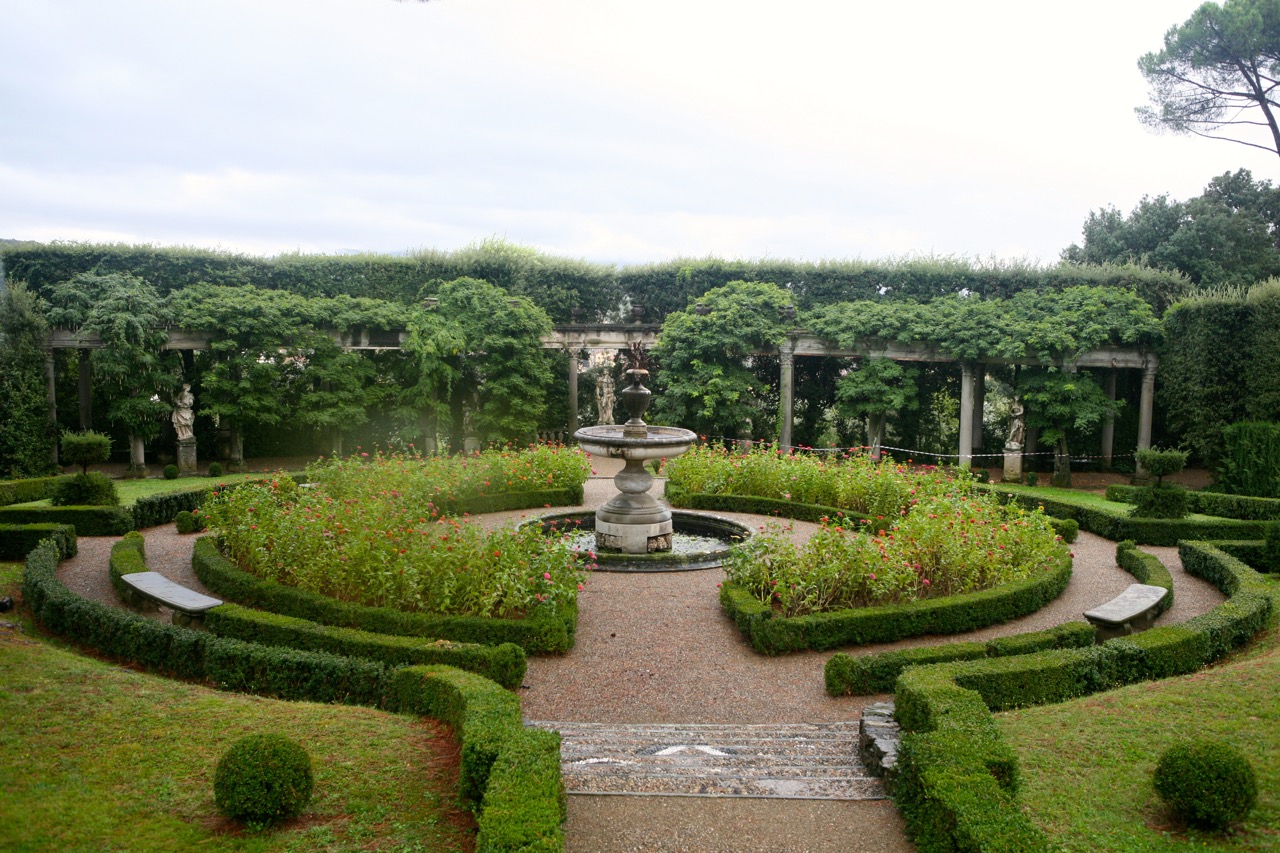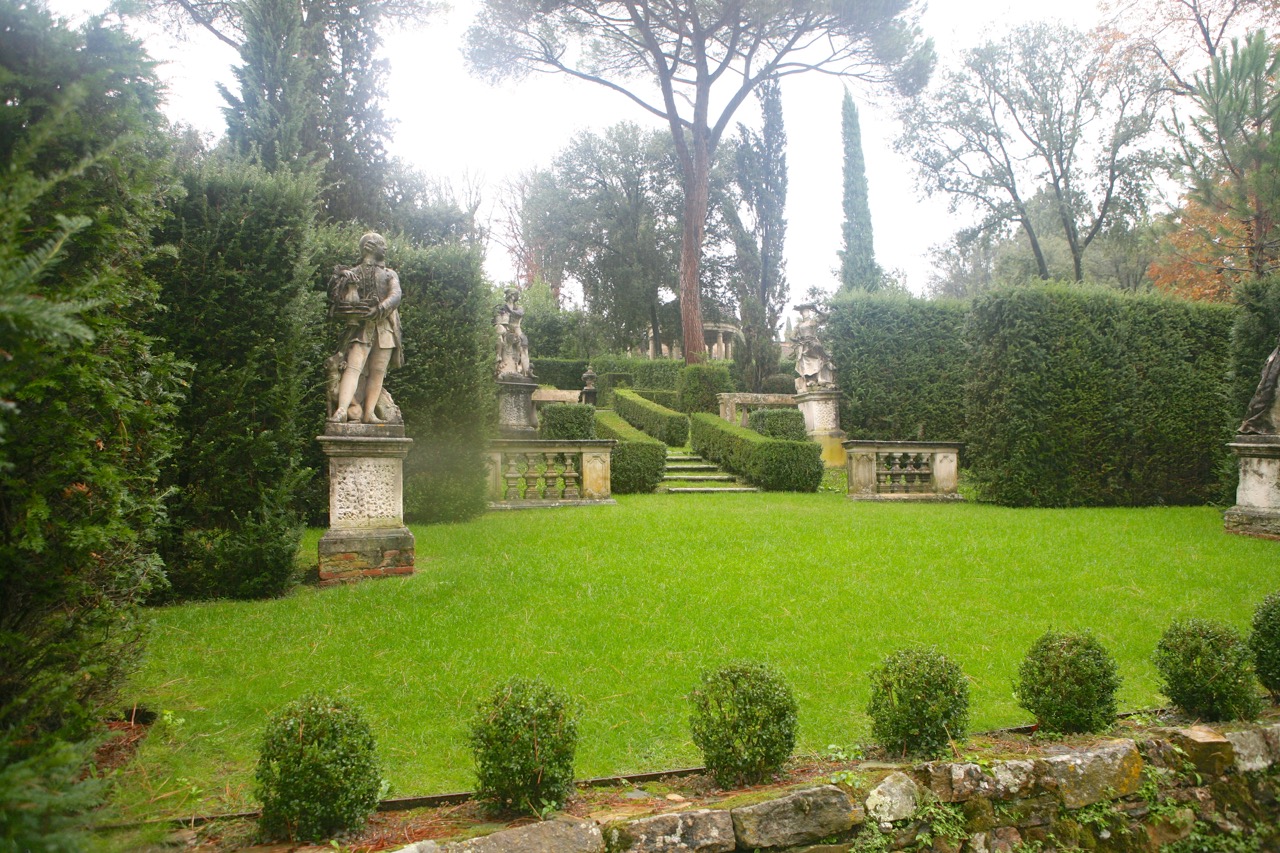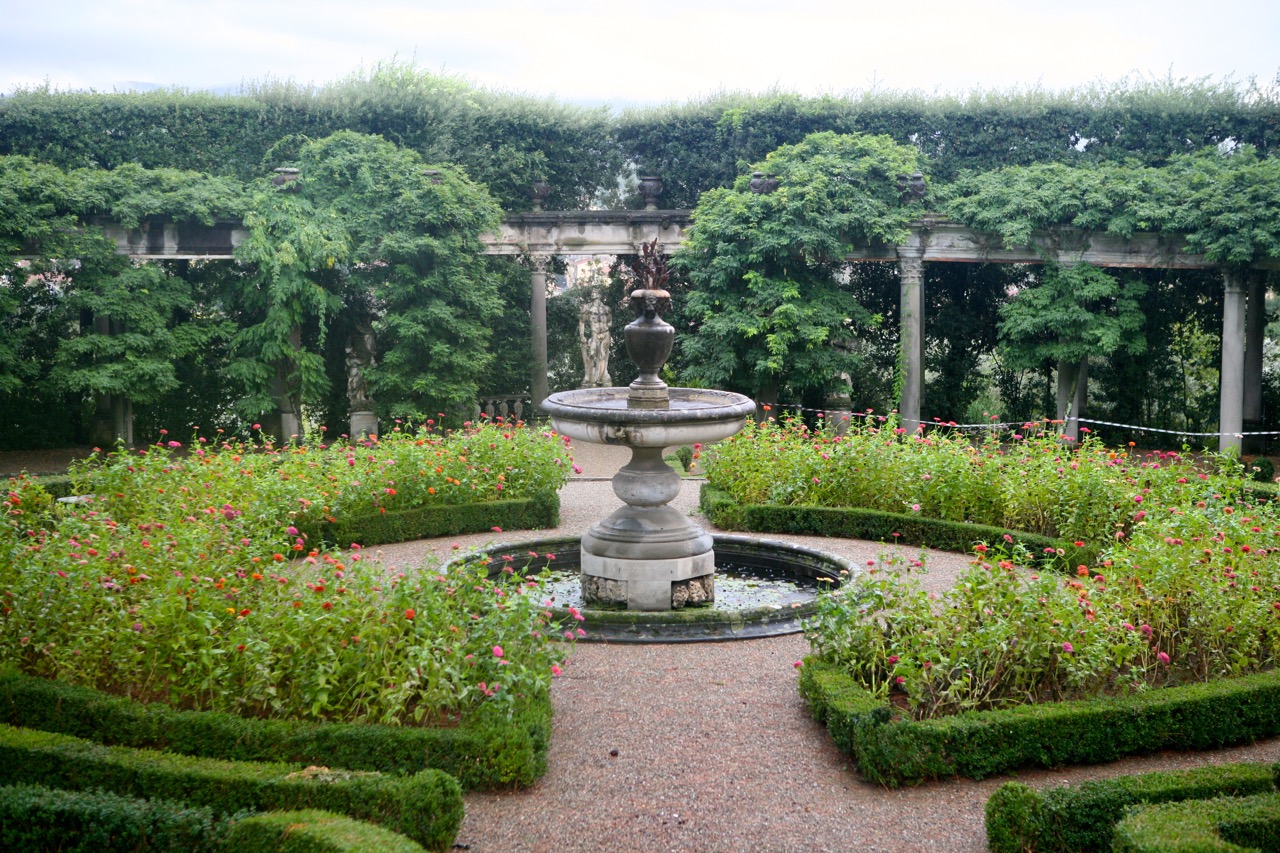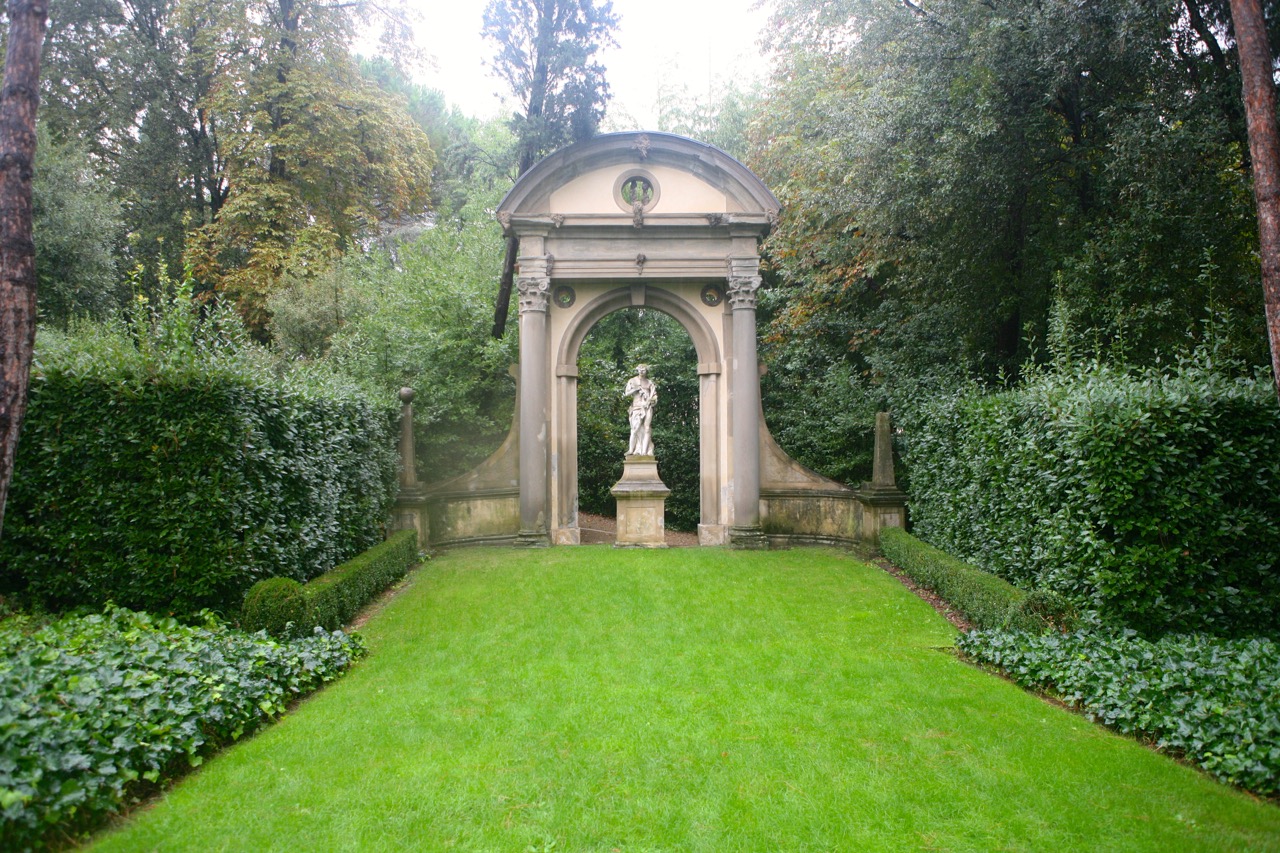“Mr. Acton had been engaged for several years in restoring the superb Renaissance gardens on his estate; some parts of them going back to the seventeenth century. They had been destroyed during that stupid craze for naturalistic English gardens. Arthur Acton was my tutor. I went to his villa four or five times a week while he was at work, carefully supervising the restoration. He gave me my teaching in classical Italian garden design.” - Landscape Architect Diego Suarez (from by R. Terry Schnadelbach’s Hidden Lives / Secret Gardens: The Florentine Villas Gamberaia, La Pietra and I Tatti)
The picturesque style drew ideas from paintings of bucolic cottages, ruins, and rustic bridges set in the Italian countryside, not grand villas. In my opinion, this 1903 photo, shows that the picturesque style at La Pietra lacked cohesion. Image: NYU Villa La Pietra
At some point we all have the urge to tear out our gardens and start over again. Perhaps it is to make room for a shed, to create an entirely different look, or to keep up with the neighbors. After enough changes occur, the desire might be to restore a garden to its original design. After all, many houses and gardens were created to be one integrated unit but that intention can get lost over time.
From renaissance times to the 1700’s, Europeans sought to tame nature. Formal gardens were arranged around linear axes: symmetrical and geometrical. Clipped plant material accentuated the design, emphasizing man’s dominance over nature. European landscapes were inspired by classic Roman, Egyptian, and Persian designs.
In the mid 1700’s, a completely different style caught on – the English picturesque. Nature and wilderness no longer something dangerous, needing to be controlled. Instead, nature represented perfection. Inspiration came from the most beautiful scenes in nature: rolling hills, curved beds, paths, and borrowed views; clusters of natural looking trees, serpentine streams and organic lakes. All elements were placed to create harmony and balance.
Such was the story of Villa La Pietra. Built in 1460 in the Italian renaissance style for a local banker, views and paths would have related directly to key features of the house - a doorway or a window. Terraces would have been laid out along axes. There would have been geometry, symmetry, and repetition.
Hortense and Arthur Acton at Villa La Pietra in 1903. At that time the landscape was in the English picturesque style. Acton would spend his life "restoring" the garden with the axes and terraces you see above. Image: NYU Villa La Pietra
When wealthy Americans, Hortense Mitchell and Arthur Acton, encountered the property around 1900, the original Italian renaissance garden had been replaced by a naturalistic one in the English picturesque style. Photos available at New York University’s La Pietra site show us what the landscape looked like.
One might expectdesign to work well, for the picturesque movement was inspired by paintings of the Italian countryside. However, those paintings included bucolic country cottages, ruins and rustic bridges, not refined villas. So setting La Pietra in a picturesque garden seems inappropriate to me: every element is beautiful, but together they don’t form a compatible whole.
Diego Suarez refers to this as “the stupid craze” because, in the 1800’s, formal gardens all over Europe were torn up and replaced with naturalistic landscapes. (To see the extent of this, check out Het Loo Palace in Appledorn, the Netherlands.)
Determined to rescue Villa La Pietra from its naturalistic landscape (and inject his own personal style), Arthur Acton began a project that lasted until WWII. He sought to return formality and axes and to layer in arts and crafts features like intimate garden rooms, eclectic sculptures, and flowering borders.
To help him, Acton found Colombian landscape architect Diego Suarez. Suarez had already worked on a number of similar garden restorations.
Both were influenced by the work of Henri Duchene. Duchene gained fame restoring French formal gardens at the turn of the the 20th century; he is among those credited with reviving the formal garden in Europe. Duchene’s innovative approach was grounded in classic Western gardens – particularly the French Formal design – but incorporated a diversity of styles that became known as “jardin mixte.” Duchene was the perfect thought-partner for the work at La Pietra.
What makes this garden refreshing is the way Acton and Suarez restored the house and garden back to its original unity by combining different styles: an approach that infuses the landscape with personality.
Landscape architect Diego Suarez brought back a respect for classical garden design. His success at Villa La Pietra earned him the project at Vizcaya Image source: Vizcaya.org









